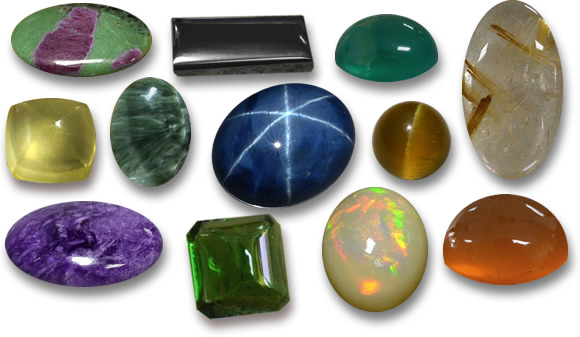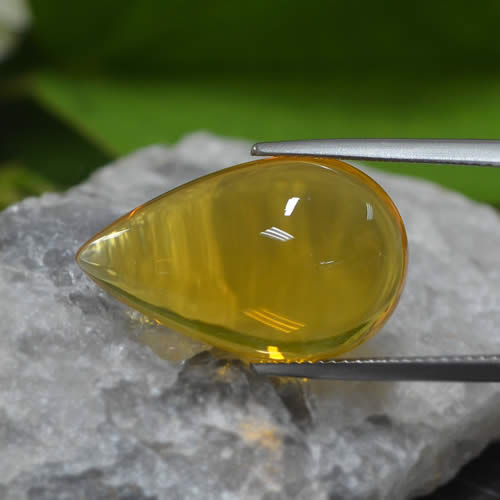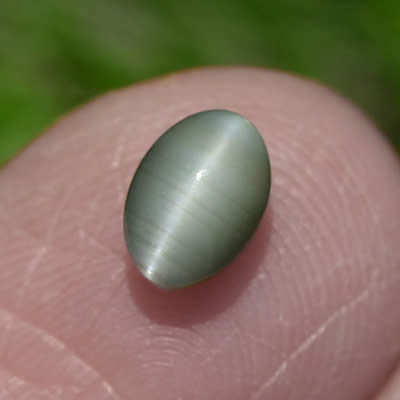|
Revisado por Andreas Zabczyk
Why are Some Gems Cut as Cabochons?In the gemstone world, a cabochon is a stone that is cut with a highly polished, rounded or convex top with no faceting and a flat or slightly domed base. A cabochon may be cut in any shape, though oval is by far the most common. The term comes from the French caboche, meaning knob or small dome. Certain stones are almost always cut "en cabochon", including opal, turquoise, onyx, moonstone, and star sapphire. In the gemstone world you will often hear the term cabochon shortened to "cab".  Technically, cabochons are not really "cut". Rather, they are shaped and then polished. It is thus a much simpler task to produce a cabochon than it is to cut a faceted gem with many faces. Before the art of faceting was developed, all gemstones were produced as cabochons, though some were intricately carved as well. Faceted gemstones made their appearance in European jewelry during the late 13th and early 14th centuries. With the advent of the horizontally turning cutting-wheel in the late 1400s came the possibility of designing and repeating elaborately conceived geometric faceting schemes, thereby controlling and enhancing the light coming from within the stone. The fascination with geometry and reflected light during the Renaissance accelerated the development of a sophisticated lapidary art. Starting with the Renaissance gem-cutting trade in Bruges, to Venice, Florence and eventually the whole of Europe, the management of light became the central theme in gem cutting.  Once the technology and skill was available to facet gemstones, why were cabochons still produced? The question is an interesting one because different gems are cut as cabs for different reasons. In many cases it is because the gem has special properties that are displayed only when it is cut as a cabochon. Examples are gems that display optical phenomena such as asterism (the star effect), chatoyancy (the cat's eye effect), iridescence (e.g., opal) or adularescence (e.g., moonstone).  Most gems that are opaque are cut as cabochons rather than faceted. Also, lower grade material of gemstone types such as sapphire, ruby and garnet is cut as cabs. If the gem material has very good color but is not sufficiently transparent or clean to be faceted, it can still be shaped and polished into very attractive cabochons. It is also common to cut softer stones as cabs, since gems with a hardness score of less than 7 (on the Mohs scale) can easily be scratched by the quartz in dust and grit. Minute scratches show much less on a cabochon than on a faceted stone. Esta página en otros idiomas
|
| STAY IN TOUCH | NEWSLETTER |
| *Se está registrando para recibir correos electrónicos promocionales de GemSelect. |
Derechos de autor © 2005-2024 GemSelect.com todos los derechos reservados.
La reproducción (texto o gráficos) sin el consentimiento expreso por escrito de GemSelect.com (SETT Company Ltd.) está estrictamente prohibida.
4574